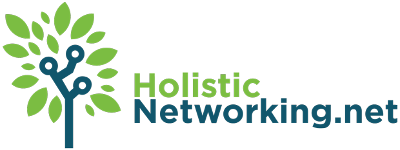Facebook, Twitter, Pinterest, LinkedIn… the list goes on and new social networks crop up every day. It used to be that a company spent its money on direct adverts where they would be most effective and called it a day. Now, you feel obligated to spend an unspecified amount of money in payroll to keep a bunch of obscure (at least to you) websites entertained, not always knowing whether anything you do has any effect on your bottom line. Any effect, that is, besides subtraction.
But as much work as it can sometimes be to maintain a suite of well-travelled social networks, the hardest part is making it look effortless. Social is social, as they say, and a bad social network management plan is one that treats some or all of your networks like a second-class citizen.
Those of us who immerse ourselves in social for a living see it way too often: a company that haplessly posts its press releases on social networks. The company that copies its content to three different networks without even the appearance of concern for voice. The zombie account that just reposts an RSS feed. And maybe worst of all: brands that don’t reply to comments and mentions, especially the negative ones. Unfortunately, businesses all too often mistake presence for voice and do more harm to their brands than good.
How does a company maintain its professionalism, keep a handle on its web expenses, and still maintain a legitimately social presence on social networks? Here are four ideas:
1. Don’t summarize! Discuss! And Blog!
Even if dumping your press releases on the web isn’t the greatest idea, keeping your audience up to date on your work is. So, how do you keep it from getting boring? First and foremost, your blog can be a bridge between the formal voice you require for press releases and the familiar tone you want to strike with your audience. This is where good blogging content comes in handy. Rather than release a press release on your social sites, why not break it down in a blog post?
Secondly, don’t summarize your blog posts when you post to social. Discuss it. Your press release and your resulting blog post are made up of multiple paragraphs of related content. Why not take one paragraph per social site and expand and reflect on it? Now, instead of a drab summary that reads the same on every social network, you have fresh content for each. Breaking your articles down in this way helps you avoid boring and annoying your most loyal customers, who may actually follow you on multiple social networking sites!
2. Use HootSuite!
… or really, any other multi-platform social media tool that you like. But rather than letting yourself or your team get overwhelmed with having to visit a bunch of sites, HootSuite and other tools allow you to pool all your social networks into a single location. Particularly when you’re trying to maintain an original and social voice across multiple platforms, it helps to be able to see those platforms and your content in a single view.
HootSuite allows you to see your Twitter, Facebook, Google Plus and other social networks in multiple streams and tabs. Hours of login/logout time are saved by simply viewing this one tool. Its amazing for efficiency!
3. Don’t Use HootSuite!
Wait, what?
That’s right. Your rate of efficiency is inversely proportional to your level of attention. The more efficient you get with HootSuite, the less you’re going to be able to really identify with your audience where they are. Each social network has its own “vibe.” Each has a pulse and a raison d’etre all its own and you loose your ability to connect with those things when you’re staring at columns of content.
So by all means, use HootSuite for the things HootSuite is good for. But don’t think that’s enough. Get out there and get some of the “fresh air” social media platforms have to offer! Go see what your audience is doing when they’re not staring at you and you just might learn something.
4. Be vulnerable.
Hardest. advice. ever. But entirely true. Everybody on social makes mistakes, says silly things, leaves themselves open to criticism. You do, too. And in many cases, people on social are trying as hard if not harder to make connections as you. So if you’re afraid to laugh at a joke at your company’s expense, you risk alienating a hugely-influential crop of your audience that could do you real damage.
You don’t need to take abuse and you don’t need to lose your sense of professionalism. But you do need to engage an audience that will find fault in what you do. Stiff corporate help desk responses please no one. Blank indifference on social is a killer – better not to even be there than to ignore people. And sometimes, people just want to have a little harmless fun with your brand, which is a great thing! Jump at every chance to engage in humor, you’ll be surprised how much loyalty vulnerability provides.



